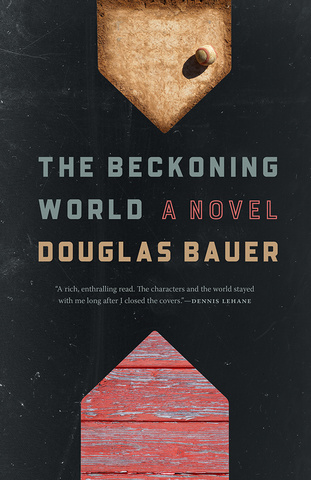
The Writing University hosts the 5Q Interview series with authors from the University of Iowa Press. We sit down with UI Press authors to ask about their work, their process, their reading lists and events. Today we are speaking with Douglas Bauer, author of The Beckoning World.
Douglas Bauer’s forthcoming novel, The Beckoning World, will be published in November, 2022. He is the author of three previous novels — Dexterity; The Very Air and The Book of Famous Iowans — and three works of non-fiction — Prairie City Iowa: Three Seasons at Home; The Stuff of Fiction: Advice on Craft, and What Happens Next?: Matters of Life and Death, which won the PEN/New England Award in Non-Fiction. He is also the editor of the anthologies, Prime Times: Writers on Their Favorite TV Shows and Death by Pad Thai and Other Unforgettable Meals.
His numerous essays, reviews, and articles have appeared in Esquire, Harper’s, The Atlantic, The New York Times Magazine, The New York Times Book Review, The Los Angeles Review of Books, and many other publications.
He has won grants from the National Endowment for the Arts in both fiction and creative non-fiction.
He lives in Cambridge, MA and teaches at Bennington College, where he is a core faculty member of the Bennington Writing Seminars MFA program in writing and literature.
1. Can you tell us a little bit about your new book?
The Beckoning World is a love story, or two love stories, one between a man and a woman, the second between that same man and their son. It's set in the first quarter of the twentieth century, with the exception of a leap forward twenty years in the last section, and it follows one Earl Dunham, who, at seventeen years old, flees his abusive coal miner-father, for the world; the beckoning world; a world lyrically away. Having escaped, he nomadically traces the Midwest’s bituminous seams, his life comprised of six days a week mining coal and, from early spring until sometime in the fall, Sundays above the ground, in the light, playing baseball. Camp teams, pick-up games, it doesn’t matter to Earl. What matters is that he plays, that he pitches, and gets ever better at it. Until, on a day of high serendipity, a major-league scout happens on a game, signs Earl to a contract, and he begins a life that seems to him a dream, one he had no idea was one a man could dream.
But dreams sometimes suffer a lovely abundance, and in Earl’s her name is Emily Marchand. She’s a dreamer in her own right, a young woman who sets out to “learn some things about the world”, and when she and Earl meet, she realizes the world she wants to learn about is him. Their love is immediate, quickly deep, and comes with threatening complications once it’s clear the respective worlds that beckon them are in essential ways in conflict.
The novel spans four decades and the breadth of the continent, with a cast of characters that includes Emily’s wise and wizened parents, diminutive farmers, “a pair of weathered prairie figurines”; a huge-hearted Pullman steward doling out aphoristic wisdom; the 1918 Spanish flu, a major character in its own right, taking vivid spectral form; and, significantly, baseball’s greatest legends, Babe Ruth and Lou Gehrig.
The Beckoning World takes an illustrative look at the way we live in and with the dreams we have for our lives; live in them, then parallel to them, then meaningfully, melancholically after their possibility has passed, when, as in Earl Dunham’s case, he’s “at last done with the thing that has long been done with him.” It attempts in other words to speak to the way one might learn to live not in one’s past but with it.
2. What was the inspiration for this work?
I read an article in the New York Times describing a cross-country barnstorming tour featuring Babe Ruth and Lou Gehrig that actually occurred in 1927. My novel's story flowed from that, and while Ruth and Gehrig are very important secondary characters they are not the main ones. The main ones, as described in my answer to question 1, are entirely fictional.
3. Do you have any plans for readings or events for this book, either in person or virtual?
I'll be giving some live readings at bookstores and venues in the Boston area, where I live, in November, and I'll be doing a virtual one, sponsored by Prairie Lights in Iowa City, in conversation with the novelist, Meg Wolitzer, on January 18, 2023.
4. What are you reading right now? Any books from other university or independent presses?
I'm mostly reading poetry these days. Currently I'm reading Frank:Sonnets, by Diane Seuss, which won this year's Pulitzer Prize, and This is Then, That was Now, by Vijay Seshadri, both published by Graywolf Press.
5. What is your writing routine? Do you have a daily routine?
Yes, when I'm working on something I typically write every day, with some Sundays off, from about 9-2.